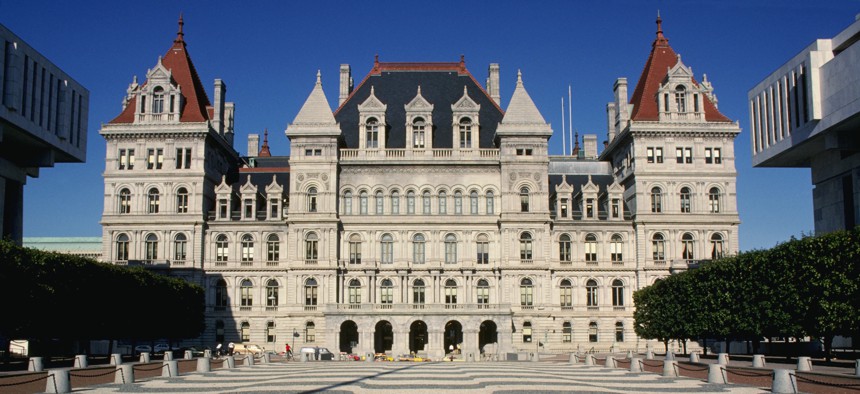Time and time again, New York has shown its leadership when it comes to environmental initiatives and supporting workers. We have taken many important measures to protect and conserve our state’s natural resources while enhancing the health and safety of New Yorkers through the investment and deployment of cleaner sources of energy and adoption of one of the most ambitious climate laws in the country, which includes strong provisions around a just transition for workers in the fossil fuel industry and in the communities most impacted by climate change.
Yet despite these policies and investments, we have much to do to tackle our largest source of climate pollution: our buildings, including public buildings. State-owned facilities from East Setauket to East Buffalo still emit harmful greenhouse gasses.
Reducing these emissions from the state’s building portfolio represents a big opportunity for New York to lead by example; we took a massive step forward with the inclusion of decarbonizing state facilities in both one-house budgets thanks to state Sen. Michelle Hinchey and Assembly Member John T. McDonald. However, this must remain a priority in the final budget. That’s why, as members of the Upgrade NY collaboration, we’re asking Gov. Kathy Hochul, the state Senate and the Assembly to commit to fully decarbonizing state-owned buildings, facilities, and campuses by 2040 as a part of this year’s final budget and getting 15 of the top polluting facilities shovel-ready by 2025.
In September 2022, Gov. Hochul issued an executive order directing state agencies to adopt sustainability and decarbonization programs. It’s time to build on this directive and make the decarbonization of all existing state facilities by 2040 the law and begin to fund the effort.
The state-owned facility designation includes SUNY and CUNY system schools, state campuses, hospital campuses, and any other state government facility greater than 20,000 square feet. Given the size of New York state, including decarbonization of this portfolio in the final budget presents a tremendous opportunity for Governor Hochul and state officials to make a noticeable difference.
A portfolio-wide approach would allow New York to identify the sites with the most cost-effective opportunities for decarbonization. For example, achieving zero onsite emissions from the top 15 highest-emitting facilities would achieve a whopping 40% reduction in climate pollution from state-owned buildings while addressing pollution and providing union jobs in some of our most disadvantaged and impacted communities.
Facilities of this size, which typically include multiple buildings, are ideal candidates for thermal energy networks. These networks connect multiple buildings into a shared network that utilize renewable sources of thermal energy like geothermal boreholes, surface water and wastewater for heating, cooling and hot water.
Currently, most buildings in New York, including those operated by the state, generate heat by burning fossil fuels via a boiler, furnace or water heater. These heating systems often waste energy and create air pollution. Switching to thermal energy networks would put that excess thermal energy into a shared network, allowing other buildings and facilities in the network to use it as a power source and with no pollution. For example, waste heat from a data processing facility could be used to warm an apartment building.
Creating and maintaining networks of this size requires the skills possessed by New York’s utility and building trades workforce. With any plan to upgrade and clean New York’s facilities, worker protections and training must be a priority to ensure those currently doing energy-related work can continue to do that work on new renewable sources.
As intimidating as this transition sounds, projects and plans for decarbonization are already underway. SUNY Albany has drafted a pathway to decarbonization, including plans for the installation of geothermal heat pumps- a continuation of the institution’s investment in geothermal energy. Members of our collaboration visited SUNY Albany on a blustery day in late February and toured the school’s Liberty Terrace, a 500-room, apartment-style dorm, and ETEC, a 240,000 square-foot research and academic building - both of which solely use geothermal wells and heat pumps for heating and cooling needs - and will cost less over its lifetime than using traditional heating and cooling systems reliant on fossil fuels. The successes at UAlbany show that the decarbonization of state facilities can be done with funding and commitment – and that geothermal and ground source heat pumps work in our cold upstate climates even in the dead of winter.
Partnering with organized labor to reduce emissions from state-owned facilities through the installation of thermal energy networks presents yet another opportunity for New York to further itself as a leader in clean energy and a just transition. It’s time to start leading by example and include the decarbonization of state facilities in the final 2023 state budget.


